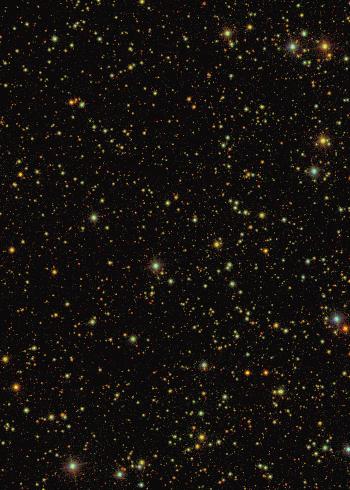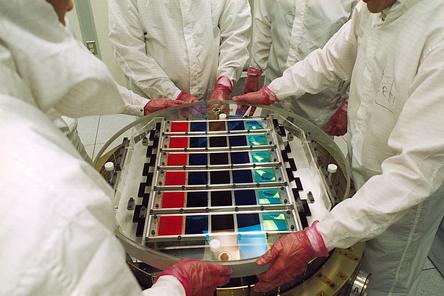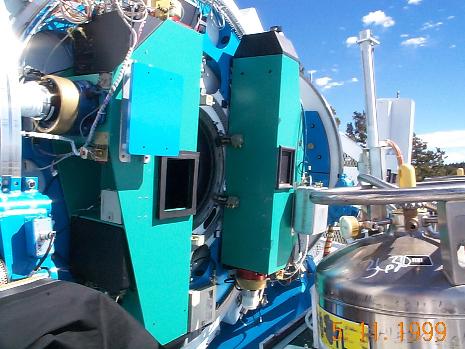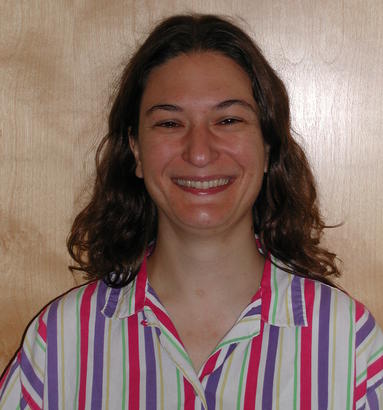I study our own Milky Way galaxy to find out how and why it evolved
to what it is today. The evidence is that our Galaxy is a fairly
typical spiral galaxy. That means that by studying our home in the
universe, we can learn a lot about the evolution of other spiral
galaxies like it. We can also use the story of our own Galaxy to help
interpret observations at high redshift, where we can catch galaxies
in the process of forming.
There are lots of observational and theoretical reasons why we think
Galaxies like the Milky Way are created through merging and accretion
of smaller systems. We can use the Milky Way to help answer some basic
questions about how that process works.
- What? Did the Galaxy grow by accreting gas which it later turned
into stars, or did it accrete a substantial number of stars that formed
elsewhere before becoming part of the Galaxy?
- When? When were the last few "major" accretion events and how
did they shape the observed properties of today's Milky way?
- How? We know the Galaxy has a sparse, spherical stellar halo
make up of metal-poor stars, a thick disk population or populations
of intermediate metallicity, and a old thin disk. How did those stellar
populations come to be distributed as they are in the Galaxy?
We know that most of the matter in our Galaxy isn't gas or stars,
but rather something we can't see at all called Dark Matter. But we
know it is there because we can observe its gravitational pull on the
stars. SEGUE is finding stars as far away in our
Galaxy as we can so that we can weigh the Galaxy and find out how much
dark matter there is, and where it is. We can also use the motions of those stars to
learn how the Galaxy is still growing by accreting new stars and dark
matter today.

Because we live in the middle of it, we see stars in the Galaxy
spread over the whole sky. You can see that for yourself when you look
at the Milky Way stretched across the sky on a clear night. What you
are looking at is the disk of our Galaxy, edge-on, from the sun's
position near one edge. So if we want a big-picture view of the
Galaxy, we need large-area surveys that cover an appreciable fraction
of the sky.
Two such surveys I have worked on and with are the Sloan Digital
Sky Survey
(SDSS) and SEGUE, the
Sloan Extension for Galactic Understanding and Exploration. Both of
these use imaging in five filters and moderate-resolution spectroscopy
to map out the structure (where the stars are) and stellar population
content (where stars of different ages and metal-content are located).
The SDSS was designed primarily to map the local universe, so it
looked up out of the plane of the Galaxy. In the process of doing
that extragalactic survey, it mapped about one quarter of the sky
around the North Galactic pole. SEGUE is designed specifically to
cover a larger range in Galactic latitude, reaching much closer to the
plane of the Galaxy, in order study the Milky Way. You can learn more about
the SDSS and SEGUE and get the data for yourself
here.
In order for the SDSS and SEGUE surveys, or any other astronomical
observations, to happen, we first need to have instruments that can
see fainter objects and over a larger range in wavelength than our
eyes can see.

A description of the imaging camera for the SDSS, which I helped design and build as graduate student (and sometimes have to fix), is here. This is a picture of us putting the front window of the camera, which is also the last corrector plate of the survey telescope, into its cell (very carefully!) The colored glass squares are the filters, one for each CCD.
 The SDSS spectrographs, which also take the stellar spectra for SEGUE.
The SDSS spectrographs, which also take the stellar spectra for SEGUE.
The LRIS spectrograph, new red CCD dewar commissioned December 2nd, 2010 (photo coming soon)
 The ARC Echelle spectrograph, on the 3.5m telescope at Apache Point
Observatory, is described here.
The ARC Echelle spectrograph, on the 3.5m telescope at Apache Point
Observatory, is described here.
Education and Previous Positions
B.S.E., Electrical Engineering, Princeton University
Ph. D., University of Chicago, Astronomy and Astrophysics
Before coming to Santa Cruz, I was a Hubble Postdoctoral Fellow
in the University of Washington, Seattle Astronomy Department
Astronomical Places
Apache Point Observatory, where the SDSS and SEGUE surveys happen.
Lick Observatory on Mt. Hamilton, where I hope to do some adaptive optics observations this coming semester.
W. M. Keck Observatory, where
I have observed on the HIRES and ESI spectrographs.
The Thirty Meter Telescope, a
future giant telescope project worked on by people at Santa Cruz and
elsewhere.
etc.
Info on backcountry permits and conditions for the Inyo National Forest, in the Sierra Nevada mountains.
Check here to see if Tioga pass in Yosemite National Park is open.
The astronomical images on this page were made from SEGUE data by
Robert Lupton
 I am an Associate Professor of Astronomy and Astrophysics
at UC Santa Cruz
I am an Associate Professor of Astronomy and Astrophysics
at UC Santa Cruz 


 The SDSS spectrographs, which also take the stellar spectra for SEGUE.
The SDSS spectrographs, which also take the stellar spectra for SEGUE. The ARC Echelle spectrograph, on the 3.5m telescope at Apache Point
Observatory, is described
The ARC Echelle spectrograph, on the 3.5m telescope at Apache Point
Observatory, is described